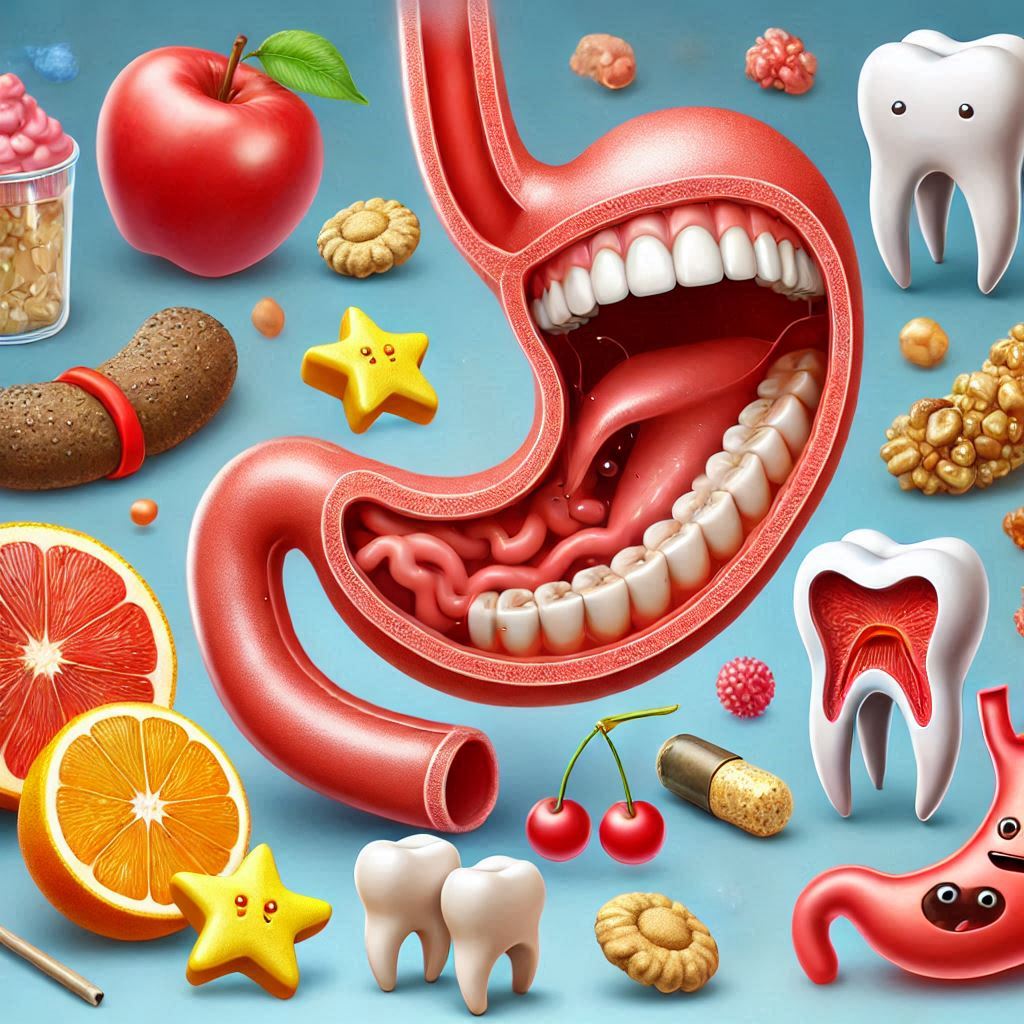Dental anxiety is a widespread concern that affects numerous individuals, often resulting in the avoidance of essential dental care. For many, just the idea of visiting a dentist can trigger significant fear and discomfort. This anxiety can stem from various factors, including previous negative experiences, fear of pain, and feelings of vulnerability associated with dental procedures. Patients may find themselves dreading appointments or even canceling them altogether, which can lead to serious oral health issues over time. As dental problems go untreated, they can escalate into more severe conditions, causing pain and requiring more invasive procedures.
Understanding dental anxiety is crucial for both patients and dental professionals. By acknowledging this common issue, effective strategies can be developed to help individuals manage their fears and ensure they receive the dental care they need. Building a supportive and understanding environment in dental practices can significantly ease anxiety for patients, encouraging them to seek regular check-ups and treatments. With the right approach, it’s possible to transform the dental experience from one of fear into one of empowerment and health.
1. Understanding Dental Anxiety
1.1 What is Dental Anxiety?
Dental anxiety is characterized by feelings of apprehension or fear associated with dental visits. This can range from mild unease to severe phobia, known as dental phobia. It’s important to recognize that dental anxiety is a common experience and that many people share similar feelings.
1.2 The Prevalence of Dental Anxiety
Research indicates that approximately 36% of the population experiences some level of dental anxiety, with around 12% suffering from dental phobia. These statistics highlight the widespread nature of this issue and underscore the need for effective coping strategies.
1.3 Types of Dental Anxiety
Dental anxiety can manifest in various ways, including:
- General Anxiety: A vague sense of worry or fear about dental procedures.
- Specific Phobias: Intense fear of specific aspects of dentistry, such as needles, drilling, or blood.
- Situational Anxiety: Anxiety that arises in specific situations, such as waiting in the dental office or sitting in the dental chair.
2. Causes of Dental Anxiety
Understanding the root causes of dental anxiety is essential for developing effective coping strategies.
2.1 Previous Negative Experiences
One of the most common triggers of dental anxiety is a past traumatic dental experience. This could include:
- Painful Procedures: If a patient has experienced pain during a previous visit, they may develop a fear of similar situations in the future.
- Unpleasant Environment: A negative atmosphere, such as unwelcoming staff or discomfort in the office, can also contribute to anxiety.
2.2 Fear of Pain
Many people fear dental procedures due to the anticipation of pain. This fear can be exacerbated by:
- Media Influence: Movies and television often portray dental procedures as painful and traumatic, which can shape public perception.
- Personal Sensitivity: Individuals with a low pain threshold may be more susceptible to fear regarding pain.
2.3 Loss of Control
Sitting in a dental chair can evoke feelings of vulnerability and loss of control. Patients often have to rely on the dentist’s expertise, which can be intimidating.
2.4 Fear of Judgment
Some patients worry about being judged for their dental hygiene practices or the state of their teeth. This fear can lead to avoidance of dental visits altogether.
2.5 Sensory Overload
The sensory experience of a dental office—bright lights, unfamiliar sounds, and specific smells—can be overwhelming for many individuals, leading to heightened anxiety.
3. The Impact of Dental Anxiety on Oral Health
3.1 Avoidance of Dental Care
The most significant consequence of dental anxiety is the avoidance of necessary dental care. This can result in:
- Worsening Dental Problems: Minor issues, such as cavities or gingivitis, can progress into more severe conditions, requiring extensive treatment.
- Emergency Situations: Delayed dental care can lead to painful emergencies that could have been prevented with regular visits.
3.2 Overall Health Implications
Oral health is closely linked to overall health. Poor dental hygiene can contribute to a range of systemic issues, including:
- Cardiovascular Disease: Inflammation and infection in the mouth can affect heart health.
- Diabetes Complications: Poor oral health can complicate diabetes management.
3.3 Psychological Effects
The impact of dental anxiety extends beyond physical health. Chronic avoidance can lead to:
- Increased Stress and Anxiety: The anticipation of dental visits can create ongoing stress.
- Negative Self-Image: Poor oral health can affect self-esteem and confidence.
4. Tips for Overcoming Dental Anxiety
4.1 Communication with Your Dentist
Open and honest communication with your dentist is crucial for managing dental anxiety. Consider the following:
- Discuss Your Fears: Inform your dentist about your anxiety. They can adjust their approach and explain procedures in detail.
- Ask Questions: Understanding what to expect can alleviate fear. Don’t hesitate to ask about procedures, potential pain, and aftercare.
4.2 Choosing the Right Dentist
Finding a dentist who understands and respects your anxiety can make a significant difference. Look for:
- Gentle Practitioners: Seek out dentists known for their compassionate and gentle approach.
- Positive Reviews: Reading patient reviews can provide insight into how a dentist manages anxious patients.
4.3 Practice Relaxation Techniques
Incorporating relaxation techniques into your routine can help alleviate anxiety before and during dental visits. Techniques to consider include:
- Deep Breathing Exercises: Take slow, deep breaths to calm your nervous system.
- Mindfulness Meditation: Practicing mindfulness can help ground you in the present moment and reduce anxiety.
4.4 Bring a Support Person
Having a friend or family member accompany you can provide emotional support. They can help distract you and provide comfort throughout the visit.
4.5 Use Distraction Techniques
Distraction can be an effective way to manage anxiety during dental procedures. Options include:
- Listening to Music or Podcasts: Bring headphones and choose calming music or an engaging podcast to keep your mind occupied.
- Fidget Toys: Small fidget toys can help channel nervous energy and provide a comforting distraction.
4.6 Consider Sedation Dentistry
For those with severe anxiety, sedation dentistry may be a viable option. Discuss potential options with your dentist, such as:
- Nitrous Oxide (Laughing Gas): This mild sedative can help patients feel relaxed and calm during procedures.
- Oral Sedatives: Prescription medications can help patients feel more at ease before their appointment.
- IV Sedation: For more invasive procedures, IV sedation may be appropriate, allowing patients to remain relaxed and unaware of the procedure.
4.7 Schedule Shorter Appointments
Start with shorter appointments focused on simple procedures, such as cleanings. Gradually increase the duration and complexity of visits as your comfort level grows.
4.8 Establish a Routine
Regular visits can help reduce anxiety over time. Establishing a dental routine can make visits feel more familiar and less intimidating.
4.9 Reward Yourself
Plan a reward for after your appointment to create a positive association with dental visits. Consider treating yourself to:
- Favorite Foods: Enjoy a special meal or dessert.
- Entertainment: Plan a movie night or a fun outing.
- Self-Care: Indulge in a spa day or other self-care activities.
4.10 Educate Yourself
Understanding dental procedures can alleviate fear. Consider:
- Researching Procedures: Learn about what to expect during common dental treatments.
- Attending Pre-Visit Consultations: Some dentists offer consultations to discuss procedures and address any concerns.
5. Long-Term Strategies for Managing Dental Anxiety
5.1 Cognitive Behavioral Therapy (CBT)
CBT is an effective therapeutic approach for managing anxiety. It involves:
- Identifying Negative Thoughts: Recognizing irrational fears related to dental visits.
- Challenging These Thoughts: Replacing negative beliefs with positive affirmations.
- Gradual Exposure: Slowly confronting dental situations to reduce anxiety over time.
5.2 Mindfulness and Meditation
Incorporating mindfulness practices into your daily routine can help reduce overall anxiety. Consider:
- Daily Meditation: Set aside time each day for mindfulness meditation to cultivate a sense of calm.
- Mindful Breathing: Practice mindful breathing techniques during dental appointments to stay grounded.
5.3 Joining Support Groups
Connecting with others who experience dental anxiety can provide valuable support. Consider:
- Online Forums: Participate in online communities where individuals share their experiences and coping strategies.
- Local Support Groups: Seek out local groups focused on anxiety management.
5.4 Ongoing Education
Continuing to educate yourself about dental health and anxiety can empower you to take control of your experiences. Consider:
- Reading Books on Dental Anxiety: Explore literature that provides insights into managing anxiety related to dental visits.
- Following Dental Health Blogs: Stay informed about dental health and anxiety management techniques through reputable online sources.
6. The Role of Dental Professionals
6.1 Creating a Comfortable Environment
Dental professionals play a crucial role in helping patients manage anxiety. They can create a comfortable environment by:
- Welcoming Atmosphere: Designing waiting areas that are warm and inviting.
- Patient-Centered Care: Taking the time to understand each patient’s unique needs and anxieties.
6.2 Training in Anxiety Management
Dentists and their staff can benefit from training in anxiety management techniques. This can include:
- Communication Skills: Learning effective ways to communicate with anxious patients.
- Behavioral Techniques: Understanding behavioral strategies to help calm anxious individuals.
6.3 Regular Check-Ins
Encouraging regular check-ins with anxious patients can foster trust and improve their overall experience. This could involve:
- Post-Appointment Follow-Ups: Checking in with patients after their visits to address any lingering fears.
- Pre-Appointment Consultations: Offering consultations to discuss concerns before the actual appointment.
7. Case Studies and Personal Stories
7.1 Real-Life Experiences
Sharing personal stories of individuals who have successfully managed dental anxiety can provide inspiration and hope. Consider highlighting:
- Overcoming Past Trauma: Stories of individuals who faced traumatic dental experiences but found ways to cope and return to regular dental visits.
- Effective Strategies: Real-life examples of coping techniques that have helped others manage their anxiety.
7.2 Interviews with Dental Professionals
Conducting interviews with dental professionals who specialize in treating anxious patients can provide valuable insights. Consider discussing:
- Their Approach: How they help anxious patients feel more comfortable.
- Success Stories: Examples of patients who have successfully managed their anxiety through their guidance.
Conclusion
Dental anxiety is a significant barrier to maintaining good oral health, but it is a manageable condition. By understanding its causes, effects, and effective coping strategies, individuals can take proactive steps to alleviate their fears.
Through open communication with dental professionals, practicing relaxation techniques, and establishing a supportive network, it is possible to overcome dental anxiety and prioritize oral health. Remember, taking the first step toward overcoming dental anxiety is an essential part of your journey to a healthier smile. With time, patience, and the right strategies, you can transform your dental experience from a source of fear into one of empowerment and health.
In conclusion, the journey to overcoming dental anxiety may be challenging, but it is entirely achievable. By implementing the strategies outlined in this article and seeking support when needed, you can create a positive association with dental care that will last a lifetime. Your oral health is an integral part of your overall well-being, and taking care of it is a gift you give to yourself.
SOURCES
Armfield, J. M. (2010) – The extent and nature of dental fear and anxiety in Australia. Australian Dental Journal, 55(4), 364-369.
Locker, D., & Liddell, A. (1992) – Dental anxiety and dental status among older adults. Community Dentistry and Oral Epidemiology, 20(6), 355-359.
Kveton, J. (2018) – Managing dental anxiety: An evidence-based approach. Journal of Dental Research, 97(1), 1-6.
Grembowski, D., Spiekerman, C., & Milgrom, P. (2009) – The relationship between dental anxiety and oral health: A review of the literature. Journal of Public Health Dentistry, 69(2), 104-112.
Ghaffar, A., & Feroze, A. (2021) – Impact of dental anxiety on oral health. International Journal of Dental Hygiene, 19(1), 77-84.
HISTORY
Current Version
October 19, 2024
Written By:
SUMMIYAH MAHMOOD





Reading this felt like walking through a gallery of ideas, each one framed with care and presented with clarity. Your words have a way of making the abstract feel tangible, of bringing thoughts into sharp focus. I walked away from this